
Centinela Solar Energy Project, Imperial Valley, CA
The Centinela Solar Energy Project is one of a few large photovoltaic power plants in the Imperial Valley, built on agricultural land near the Mexican border, over the last three years. The Imperial Valley now produces around 1,000 megawatts of solar power, similar to what a large gas or coal-fired power plant produces, and what around 350,000 homes consume. This amount is produced only at peak output, of course, and when the sun is shining.

Mount Signal Solar Plant, Imperial Valley, CA
Mount Signal Solar is the largest of a few major photovoltaic plants being built in the southwestern Imperial Valley, west of Calexico. Construction started in 2012, and the plant started producing more than 100 megawatts in late 2013. When it is complete, it is expected to produce 265 megawatts. It has changed hands a few times, and been called a few things, including Imperial Valley Solar 1. It is now being built by Abengoa, Silver Ridge, and 8 Minute Energy, and is expected to cost more than $1.5 billion. Like the other plants in the area, it is connected to San Diego by the new Sunrise Powerlink transmission system.
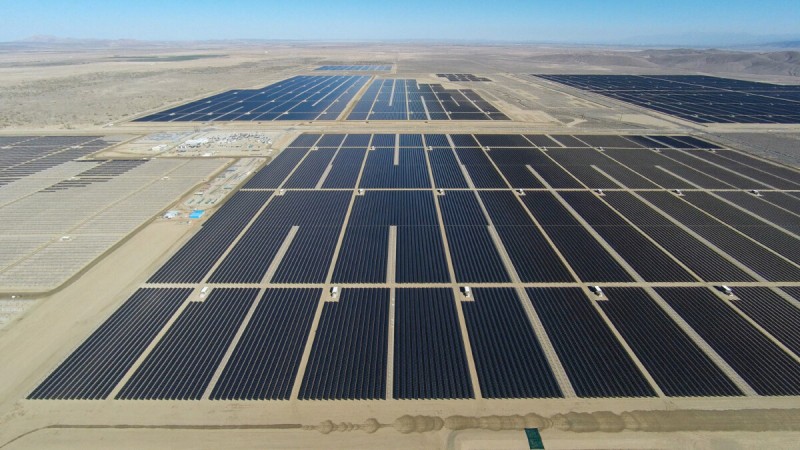
Antelope Valley Solar Ranch, Antelope Valley, CA
The first phase of the Antelope Valley Solar Ranch went online with 150 megawatts in 2013, and is expected to produce more than 230 megawatts when it is complete. The Antelope Valley, north of Los Angeles, has a dozen utility-scale solar plants fully online or soon to be, capable of supplying more than 1,100 megawatts at the end of 2014. At the eastern end of the valley are three solar thermal plants, built in the late 1980s, which until ten years ago, were the only large utility-scale solar plants in the USA. One of them, at Harper Lake, is tripling in size at the moment.
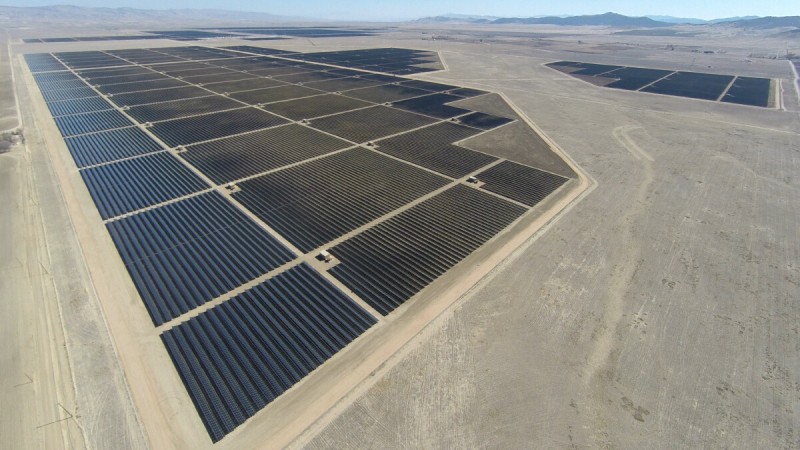
Topaz Solar Plant, Carrizo Plain, CA
The Topaz Solar Plant is the larger of two major solar power plants in the remote Carrizo Plain of California, in the Temblor Range, west of Bakersfield. Construction started in 2011, and by early 2014 it was producing 360 megawatts, more than any other solar plant in the country. By the time it is complete, sometime in 2015 it will have over 9 million photovoltaic panels, producing 550 megawatts, likely making it the largest solar power plant in the world. The nearby California Solar Ranch produces 250 megawatts, and was completed in 2013. Together the scattered clusters of solar panels at these plants cover close to ten square miles.
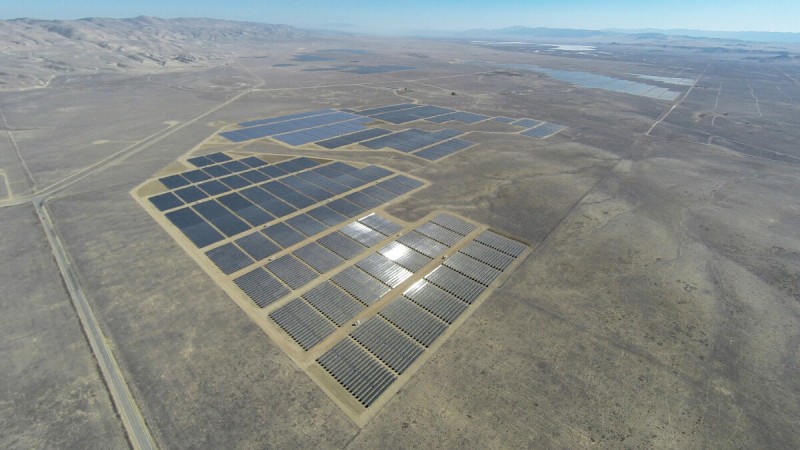
California Valley Solar Ranch, Carrizo Plain, CA
California Valley Solar Ranch is one of two solar power plants in the high and dry Carrizo Plain of Southern California. Construction started in 2011 and was complete in 2013, with the installation of its 749,088th photovoltaic panel. It was built by the Sun Power Corporation and NRG Solar, at a cost of $1.6 billion, and produces as much as 250 megawatts, from ten separate solar fields. It is one of the largest solar plants in the world.
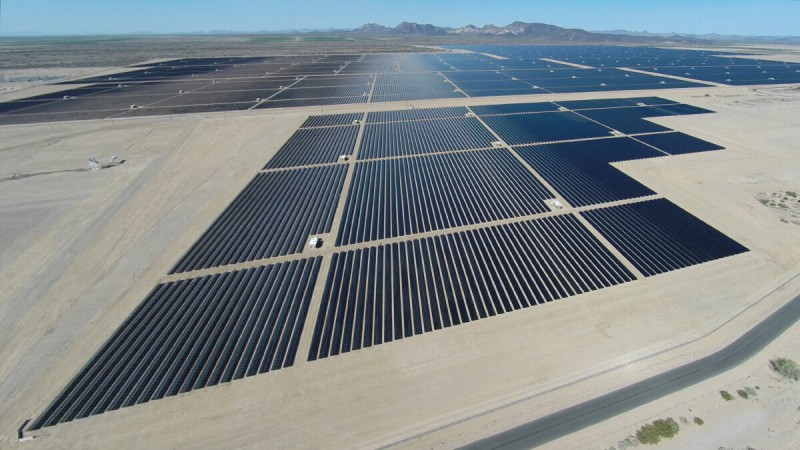
Agua Caliente Solar Project, Gila River Valley, AZ
The Agua Caliente Solar Project produces more than 250 megawatts, and is expected to produce as much as 397 megawatts when it is complete. It will have 5,200,000 photovoltaic panels, covering close to four square miles (2,400 acres). It is the westernmost of a chain of several utility-scale solar plants following the Gila River Valley, west of Phoenix, which collectively produce close to 1,000 megawatts. With expansions and new plants proposed for the region, this amount could double in a few years.

Mesquite Solar Plant, Gila River Valley, AZ
The Mesquite Solar Plant is expected to produce 700 megawatts when completed, which would make it the largest solar plant in the world, at least for a while. Construction started in 2011, and the plant was producing 150 megawatts by 2013. It is a photovoltaic plant, with millions of panels, being built by Sempra Energy and Consolidated Edison. It will cover six square miles, and cost more than $2 billion by the time it is done, likely sometime in 2015. It is located in western Arizona, near the Palo Verde Nuclear Generating Station, the largest nuclear power plant in the country.

Solana Power Plant, Gila River Valley, AZ
When Solana was completed in 2013 it was the largest thermal solar plant in the nation. It produces 280 megawatts, using the heated brine system known as parabolic troughs, concave mirrors in rows that track the sun, heating up a chemical brine that makes steam, and then power. Located west of Gila Bend, Arizona, it was built by the Spanish company Abengoa, which is building another 280 megawatt plant of the same type at Harper Lake, in California. The cost of these plants is close to $2 billion, each.

Copper Mountain 3 Solar Plant, Mesquite Valley, NV
Construction started on the Copper Mountain 3 Solar Plant, a 250-megawatt photovoltaic power plant, in 2013, and it is expected to be completed in 2015. It is located in the El Dorado Valley, south of Las Vegas, near some other, smaller solar plants that are already online. This area, south of Las Vegas, has a half dozen utility-scale solar plants under construction or online, together capable of providing close to 800 megawatts. This includes the 392-megawatt Ivanpah Solar Plant, built by BrightSource, Bechtel, NRG, and Google, which opened in 2014, just over the state line in California. At least another 1,000 megawatts of solar is planned for the area.
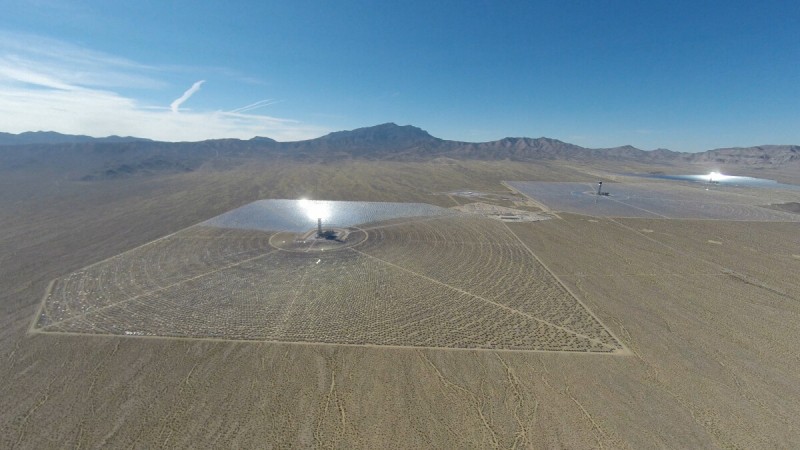
Ivanpah Solar Power Plant, Mojave Desert, CA
When it went online in early 2014, Ivanpah was likely the largest solar power plant in the world. It is certainly the largest thermal solar power plant, with 3,500 acres of mirrors mounted on 173,500 heliostats, that track the sun, focusing the sun on three 450 foot tall towers full of flowing chemical brine, which generates steam, then electricity–as much as 392 megawatts. Construction started on the plant in 2011, built by Bechtel, Brightsource, NRG, and Google, at a cost of $2.2 billion. It is a futuristic landmark next to the Interstate, next to the state line, south of Las Vegas.
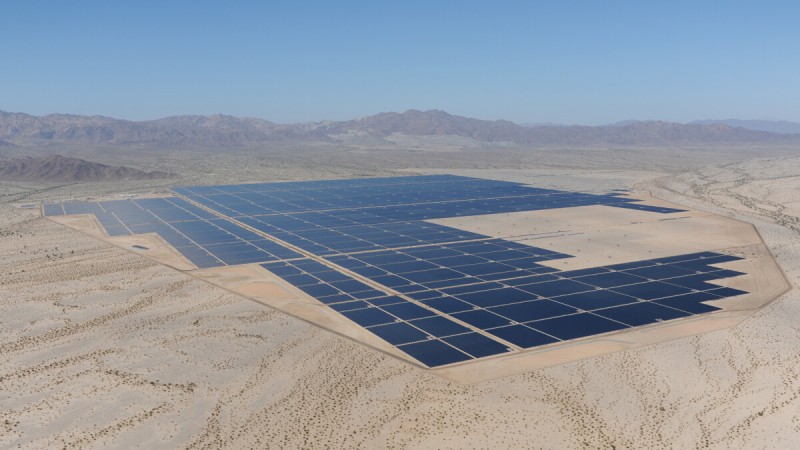
Desert Sunlight Solar Plant, Mojave Desert, CA
The Desert Sunlight Solar Plant will be tied as the largest solar power plant in the world if it is built out to its expected 550 megawatts. Construction started in 2011, north of the remote Mojave town of Desert Center, and it is expected to be complete in 2015. Built by First Solar, Nextera, GE, and Sumitomo, the plant is likely to cost more than $2 billion, cover 3,800 acres, and use 8,800,000 photovoltaic panels. It is one of two large plants nearly completed along the Interstate 10 corridor, between Joshua Tree National Park and the Colorado River. Other large plants have been permitted for this area as well.
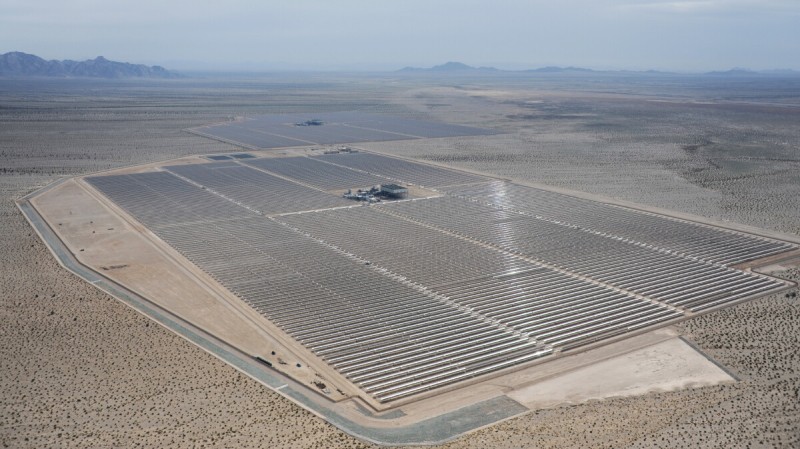
Genesis Solar Plant, Mojave Desert, CA
Genesis is a solar thermal power plant that began construction in 2011, and is expected to produce 250 megawatts when it is complete, sometime in 2014. It is located on the north side of Ford Dry Lake, west of Blythe, California. It is being built by Nextera, and is expected to cost around $1.5 billion. It is one of the largest parabolic trough-type power plants, with 600,000 concave mirrors that follow the sun and focus sunlight on a chemical brine passing through tubes in the troughs. This brine generates steam and then electricity.
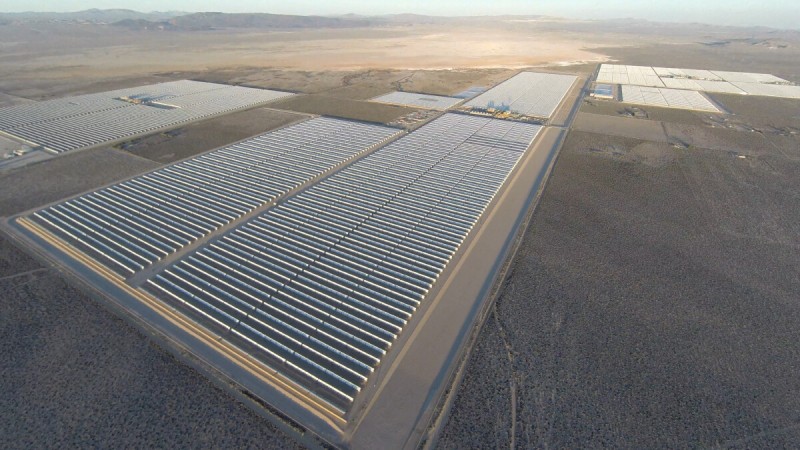
Mojave Solar Project, Mojave Desert, CA
The Mojave Solar Project is a solar power plant under construction since 2011, and expected to go online in 2014. It is a solar thermal plant, using mirrored parabolic troughs, not photovoltaic panels. At 280 megawatts, it would be the largest plant of this type in the world. The Spanish company Abengoa is building the$1.6 billion facility, which is located in Lockhart, California, next to the Harper Lake SEGS, which for more than a decade was the largest solar power plant in the world, producing 160 megawatts as early as 1990, and which is also a parabolic trough type.
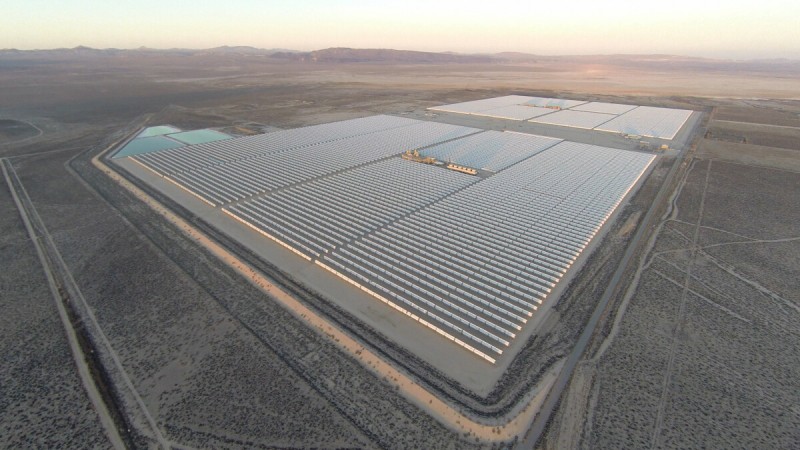
SEGS 8-9, Mojave Desert, CA
For 15 years following its construction in 1990, this was the largest commercial solar power plant in the world, generating around 160 megawatts at its peak. It is one of three separately owned sites within 40 miles of one another, that make up the nine solar fields in the Solar Electric Generating System (SEGS #1 and 2 are at Daggett, and #3 through 7 are at Kramer Junction). Harper Lake was the last of these built, and is designated as SEGS #8 and 9. It is still online, but has been surpassed by other newer facilities, including the Mojave Solar Project, which is being built next to it, and is expected to produce 280 megawatts when it goes online in 2014.

SEGS 3-7, Mojave Desert, CA
SEGS 3-7 (Kramer Junction) is a 150-megawatt solar power plant. It is one of three separate sites within 40 miles of one another which make up a total of nine solar fields in the Solar Electric Generating System (SEGS). Together these three facilities can generate about 354 megawatts at peak output. Until around 2005, this comprised most of the commercial solar power produced worldwide, and for nearly 15 years, this was the second largest solar power plant in the world. It is a solar thermal plant, using parabolic troughs to generate heat, then steam, then power. It is supplemented with natural gas.